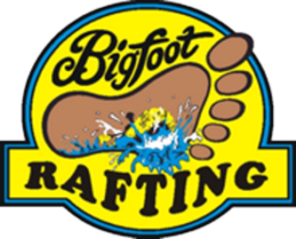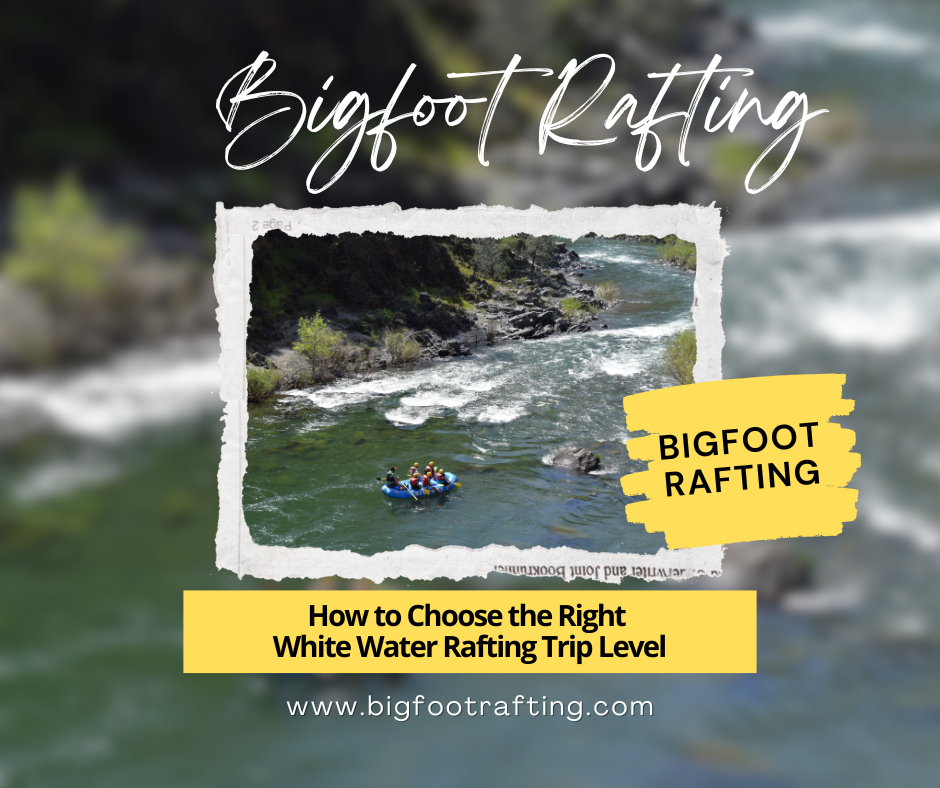The allure of whitewater rafting in California lies in its blend of natural beauty and exhilarating adventure. From gentle floats to heart-pounding plunges, the experience can vary dramatically. Understanding the different whitewater rafting difficulty levels is crucial for planning a safe, enjoyable, and appropriately challenging rafting trip in California. This guide will demystify the classification system, helping you navigate the rapids with confidence and choose the perfect rafting adventure with Bigfoot Rafting.
Understanding the International Scale of River Difficulty
Are there different levels of white water rafting? Absolutely. The sport uses a standardized system known as the International Scale of River Difficulty (ISRD) to classify rivers and individual rapids based on their technicality and the potential hazards they present. This scale helps rafters, guides, and California rafting outfitters communicate the nature of a river section, ensuring everyone has a clear understanding of what to expect.
The ISRD categorizes whitewater into six distinct classes, ranging from Class I (easiest) to Class VI (most extreme). Each class describes the characteristics of the water, the required skill level of the paddler, and the inherent risks involved. This classification system is dynamic; a river’s difficulty can change significantly with varying water levels, making it essential to consider current conditions before any rafting trip in Northern California.
Detailed Breakdown of Whitewater Rafting Levels
How many levels are there for white water rafting? There are six primary classes, each offering a unique experience. Let’s explore what each level entails.
Class I: Easy
Characteristics: Class I rapids are characterized by very small waves, gentle currents, and wide, clear passages. Obstacles, if any, are easily avoidable and pose little to no risk. These sections are often referred to as “riffles” or “flatwater” with a current.
Suitability: This is the easiest grade of whitewater and is ideal for first-timers, young children, and families seeking a relaxing, scenic float. No prior rafting experience is necessary, and the focus is more on enjoying the natural surroundings than on intense paddling.
What do Class I rapids look like? Imagine a river with a noticeable current, perhaps a few ripples on the surface, but nothing that would cause a raft to rock significantly. It’s a calm, moving body of water—perfect for a family-friendly California rafting trip.
Class II: Novice
Characteristics: Class II rapids feature straightforward rapids with wider, clear channels that are easily navigated. They may include small waves, minor obstacles, and occasional rocks that require some maneuvering. The current is faster than Class I, providing a bit more splash.
Suitability: Class II is suitable for beginners who are comfortable with a bit more movement and are ready to learn basic paddling techniques. It’s a great step up from Class I for those looking for a slightly more engaging experience without significant risk.
What do Class II rapids look like? You’ll see more defined waves, perhaps a foot or two high, and the raft will move more noticeably. You might need to paddle a bit to steer around visible rocks—an ideal option for first-time rafters in California looking for a splash of excitement.
Class III: Intermediate
Characteristics: Class III rapids present moderate, irregular waves that can be up to four feet high. They often involve narrow passages, eddies, and currents that require precise maneuvering and good teamwork from the raft crew. Obstacles are present but can be avoided with proper technique. Capsizing is possible but uncommon.
Suitability: This level is perfect for intermediate rafters who have some prior experience and are in good physical condition. It offers a good balance of excitement and manageable challenge. Many popular rafting trips in California, including those on the American River or sections of the Trinity River, feature Class III rapids.
What is Class III white water rafting? It’s often called “Class Fun” because it provides a thrilling experience with significant splashes and dynamic water, but without the extreme risks of higher classes. Can a beginner do Class III rapids? While some outfitters might take first-timers on Class III trips with experienced guides, it’s generally recommended to have some basic paddling skills or a strong desire for adventure. Group assistance and clear communication are key.
Class IV: Advanced
Characteristics: Class IV rapids are long, difficult, and powerful, featuring large, unavoidable waves, turbulent water, and significant drops. They demand precise maneuvering, strong paddling skills, and quick decision-making. The risk of capsizing is higher, and self-rescue skills are highly recommended.
Suitability: Class IV is for experienced rafters who are physically fit and possess advanced paddling techniques. These are adrenaline-pumping rapids that offer a serious challenge.
What is Class IV white water rafting? It’s a significant step up in difficulty. Can a beginner do Class IV rapids? Generally, no. Class IV rapids require a higher skill level, physical endurance, and the ability to react quickly to complex water dynamics. Most California rafting outfitters will require previous rafting experience or a strong assessment of physical capability for Class IV rafting trips.
Class V: Expert
Characteristics: Class V rapids are extremely difficult, long, and violent, with complex, turbulent water and large, unavoidable waves and holes. They often involve steep drops, constricted passages, and significant hazards. Scouting from shore is often necessary, and rescue is difficult.
Suitability: This level is reserved for expert rafters with extensive experience, exceptional physical fitness, and advanced self-rescue abilities. It requires precise teamwork, strong leadership, and a high tolerance for risk. These are the most intense white water rafting trips in California, often sought by thrill-seekers.
How hard is Level V white water rafting? It’s incredibly challenging. What are Level V white water rafting rapids? They are characterized by continuous, powerful whitewater, often with large-volume flows, where mistakes can have serious consequences. This is the highest class of rafting that is generally considered runnable, though with extreme caution.
Class VI: Extreme/Unrunnable
Characteristics: Class VI rapids are considered nearly impossible or entirely unrunnable. They present extreme, unpredictable, and highly dangerous conditions that pose an immediate threat to life. These sections are rarely attempted and only by highly specialized teams with extensive preparation and safety measures.
Suitability: These are typically considered unrunnable for commercial or recreational purposes. They are open-ended classifications, meaning they represent the absolute limit of what is considered navigable.
Choosing the Right Rafting Level for Your Adventure
Now that you understand the different levels of difficulty, how do you choose the right whitewater rafting California level for your next adventure? Selecting the appropriate class is paramount for both safety and enjoyment.
- Assess Your Experience Level
• First-timer? Start with Class I or Class II. These levels allow you to get comfortable with the raft, the water, and basic paddling commands without overwhelming you. Can a beginner go white water rafting? Absolutely, and these lower classes are perfect for it.
• Some experience? If you’ve done Class II and want more excitement, Class III might be your next step.
• Experienced paddler? If you’re confident in your skills and physical fitness, Class IV or even Class V might be suitable, but always consult with the rafting outfitter. - Consider Your Physical Fitness
How fit do you have to be for white water rafting? While Class I and II require minimal physical exertion, higher classes demand more.
• Class III: Requires moderate physical fitness, as you’ll be paddling actively and bracing against waves.
• Class IV and V: Demand good to excellent physical fitness, strong upper body strength, and endurance. You’ll be paddling hard, potentially swimming in turbulent water if you fall out, and assisting with self-rescue. - Evaluate Your Group Composition
• Families with young children or seniors? Stick to Class I or II for a family-friendly California rafting experience. Many outfitters have minimum age requirements for higher classes.
• Group of thrill-seekers? If everyone in your group is experienced and seeking an adrenaline-pumping adventure, then Class IV or V might be appropriate. Ensure everyone is on the same page regarding the desired intensity. - Understand the Impact of Water Levels
River difficulty can fluctuate significantly with changing water levels. A Class III rapid during low water might become a Class IV or even Class V during high water. Always check current water levels and conditions with your chosen rafting outfitter in California. They are the experts on how the river’s character changes. - Consult with Reputable Outfitters
The best way to choose the right rafting trip is to speak directly with a reputable California whitewater rafting outfitter like Bigfoot Rafting. They can provide detailed information about specific river sections, current conditions, and guide you to a trip that matches your skill level and expectations. They often offer multiple-level trips or sections of rivers that cater to different abilities.

